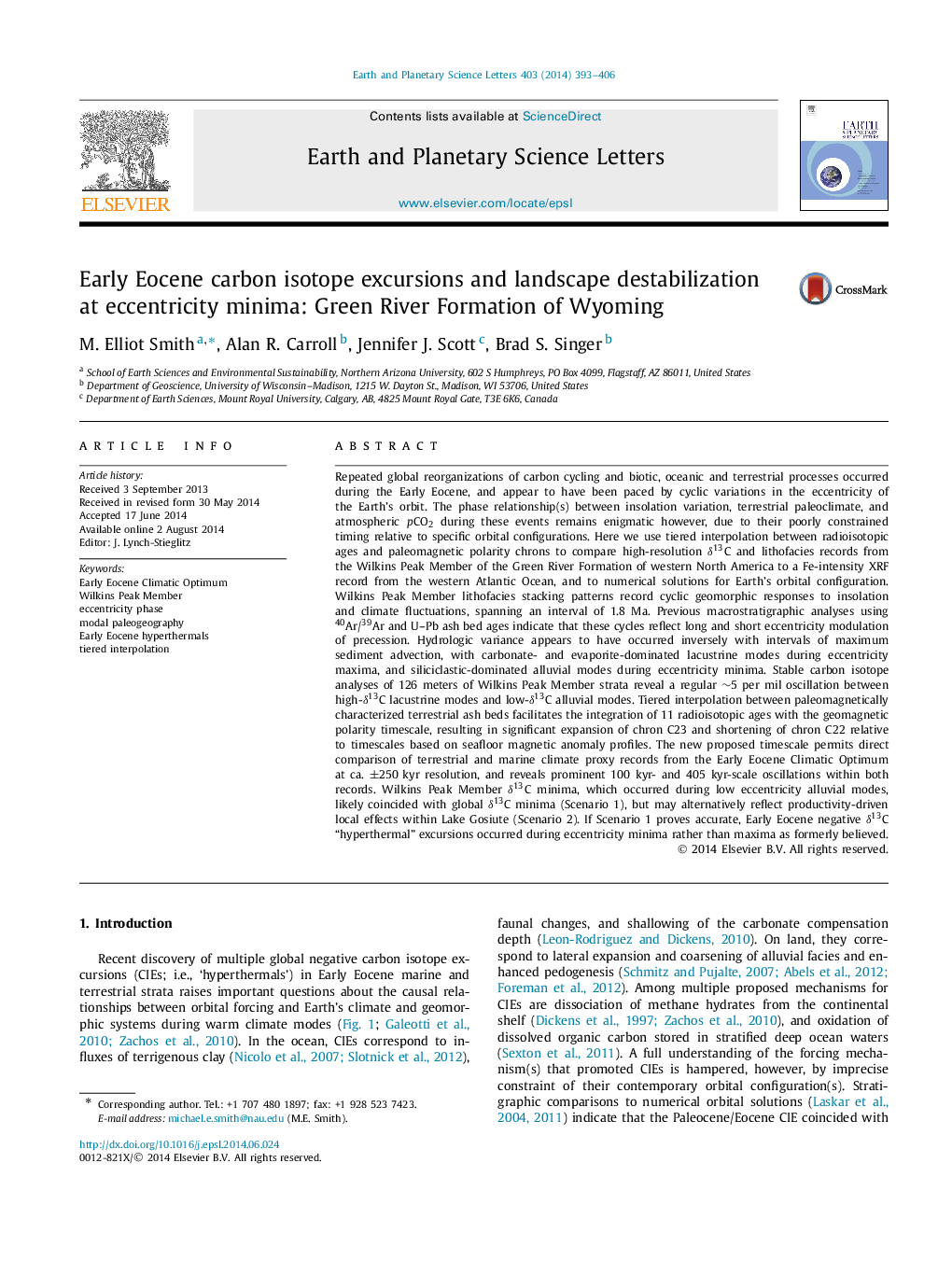| کد مقاله | کد نشریه | سال انتشار | مقاله انگلیسی | نسخه تمام متن |
|---|---|---|---|---|
| 6429153 | 1634753 | 2014 | 14 صفحه PDF | دانلود رایگان |
- High-resolution δ13C and lithofacies record of orbital cyclicity in Eocene Wyoming.
- δ13C minima correspond to siliciclastic-dominated alluvial modes.
- δ13C maxima correspond to lacustrine intervals and high hydrologic variance.
- Perturbations and recovery time of fluvial networks was rapid (<10 kyr).
- Tiered interpolation to marine record suggests synchronous global geomorphic changes.
Repeated global reorganizations of carbon cycling and biotic, oceanic and terrestrial processes occurred during the Early Eocene, and appear to have been paced by cyclic variations in the eccentricity of the Earth's orbit. The phase relationship(s) between insolation variation, terrestrial paleoclimate, and atmospheric pCO2 during these events remains enigmatic however, due to their poorly constrained timing relative to specific orbital configurations. Here we use tiered interpolation between radioisotopic ages and paleomagnetic polarity chrons to compare high-resolution δ13C and lithofacies records from the Wilkins Peak Member of the Green River Formation of western North America to a Fe-intensity XRF record from the western Atlantic Ocean, and to numerical solutions for Earth's orbital configuration. Wilkins Peak Member lithofacies stacking patterns record cyclic geomorphic responses to insolation and climate fluctuations, spanning an interval of 1.8 Ma. Previous macrostratigraphic analyses using 40Ar/39Ar and U-Pb ash bed ages indicate that these cycles reflect long and short eccentricity modulation of precession. Hydrologic variance appears to have occurred inversely with intervals of maximum sediment advection, with carbonate- and evaporite-dominated lacustrine modes during eccentricity maxima, and siliciclastic-dominated alluvial modes during eccentricity minima. Stable carbon isotope analyses of 126 meters of Wilkins Peak Member strata reveal a regular â¼5 per mil oscillation between high-δ13C lacustrine modes and low-δ13C alluvial modes. Tiered interpolation between paleomagnetically characterized terrestrial ash beds facilitates the integration of 11 radioisotopic ages with the geomagnetic polarity timescale, resulting in significant expansion of chron C23 and shortening of chron C22 relative to timescales based on seafloor magnetic anomaly profiles. The new proposed timescale permits direct comparison of terrestrial and marine climate proxy records from the Early Eocene Climatic Optimum at ca. ±250 kyr resolution, and reveals prominent 100 kyr- and 405 kyr-scale oscillations within both records. Wilkins Peak Member δ13C minima, which occurred during low eccentricity alluvial modes, likely coincided with global δ13C minima (Scenario 1), but may alternatively reflect productivity-driven local effects within Lake Gosiute (Scenario 2). If Scenario 1 proves accurate, Early Eocene negative δ13C “hyperthermal” excursions occurred during eccentricity minima rather than maxima as formerly believed.
Journal: Earth and Planetary Science Letters - Volume 403, 1 October 2014, Pages 393-406
